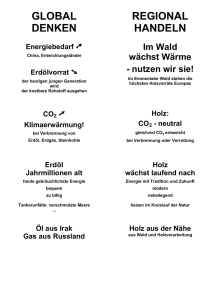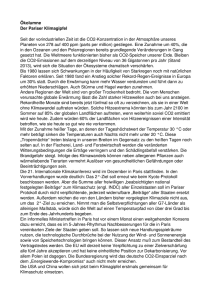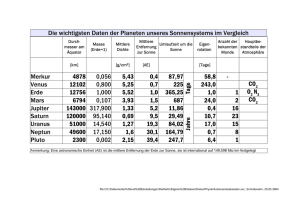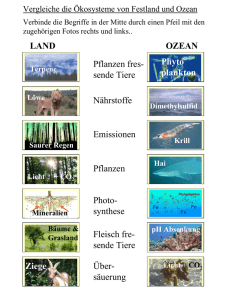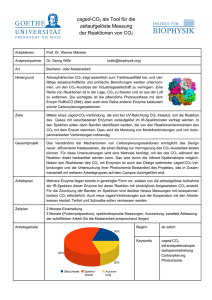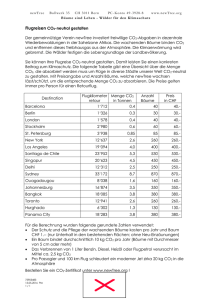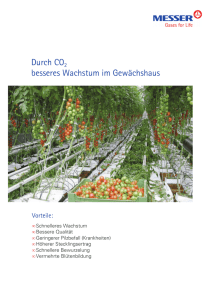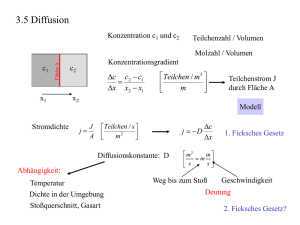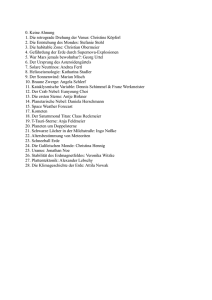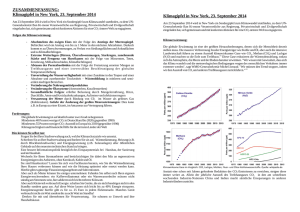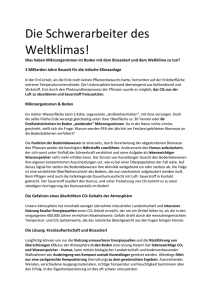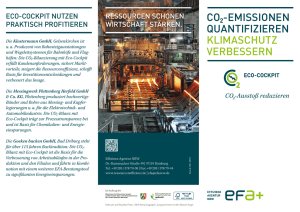Parameter für Habitabilität
Werbung
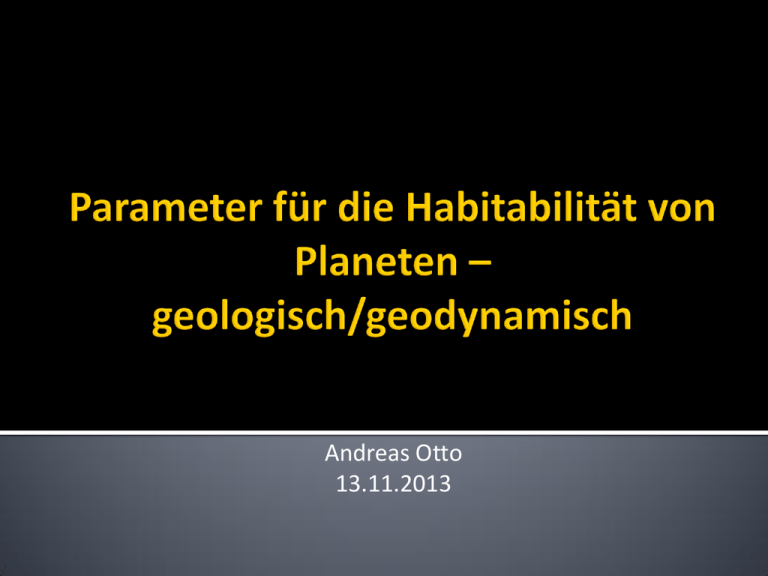
Andreas Otto 13.11.2013 stabiler Orbit in der Habitablen Zone flüssiges Wasser Atmosphäre (Treibhauseffekt) Vulkanismus genug planetare Masse aktive Plattentektonik gute Konvektion aktiver magnetischer Dynamo schwacher atmospheric escape H. Lammer et al. (2009) What makes a planet habitable? H. Lammer et al. (2009) What makes a planet habitable? Magma-Ozean (vor 4.5 - 4 Gyr) Late Heavy Bombardment Übergangsphase (vor 4 - 3 Gyr) Entwicklung der Plattentektonik genug Masse für Hitzefluss and Mantelkonvektion genug Wasser erleichtert Plattentektonik http://upload.wikimedia.org/wikipedia/de/0/0f/Plattentektonik.png Plattentektonik reguliert atmosphärische Partikelzusammensetzung CO2-Zyklus Oberflächentemperatur verändert ständig die Umwelt Bewegung der Landmassen hält Biodiversität aufrecht Antrieb für Evolution Temperaturregulation im Inneren des Planeten Aufrechterhaltung des magnetischen Dynamos Ursache: sehr leitfähige Fluide flüssiger äußerer Kern (Gesteinsplaneten) elektrisch leitfähiger Wasserstoff (Gasplaneten) thermische Konvektion / physikalische Konvektion große Wassermengen fester innerer Kern http://upload.wikimedia.org/wikipedia/commons/e/e4/Terrestial_Planets_internal_de.jpg pre-dynamo phase (Venus) dynamo phase (Earth, Mercury) 30,000 nT 340 nT post-dynamo phase (Mars, Moon) 1,000 nT 100 nT Schutz gegen stellare Winde / CMEs Dynamo Radius Feld muss groß genug sein Rotation muss stark genug sein starker Einfluss der Corioliskraft (Vorraussetzung für Konvektion) Keine gebundene Rotation terrestrische Planeten in der HZ um M Zwerge langsame Rotationsraten => schwaches magnetisches Moment K-Stern 0.2 AU H. Lammer et al. (2010) Geophysical and Atmospheric Evolution of Habitable Planets wichtiger Faktor für die Erhaltung der Atmosphäre 1. Atmosphäre: H2, H2S, CO2, H2O 2. Atmosphäre durch volcanic outgassing, Kometen und Meteoriten CO2, H2O, H2S CH4, CO, N2 Schildvulkane Black Smokers Methanquellen http://hgsblogs.co.uk/hgsrocks/files/2011/10/blacksmoker.jpg http://upload.wikimedia.org/wikipedia/commons/b/b8/Deep_sea_vent_chemistry_diagram.jpg erstes Leben um hydrothermale Systeme mittelozeanische Rücken Komatiit-Vulkane seichte Gewässer S, Fe, Mn, Zn, Ni, Mg aus vulkanischen Substraten essentiell für Leben wichtige Rolle für Photosynthese Komatiit 3.5 Gyr alt Hoher Magnesiumgehalt Hohe Schmelztemperatur Schildvulkane Quelle für Schwefel und Eisen Reduktion von CO2, CO und N2 Mauna Loa (Hawaii) Olympus Mons (Mars) http://pds.jpl.nasa.gov/planets/images/browse/mars/olympus.jpg http://marsprogram.jpl.nasa.gov/gallery/atlas/images/hawaii.gif H. Lammer et al. (2010) Geophysical and Atmospheric Evolution of Habitable Planets Karbonat-Silikat Zyklus reguliert Druck von CO2 Durchschnittliche Oberflächentemperatur leicht über 273K flüssiges Wasser für Karbonatbildung notwendig zu niedriges CO2 Level stoppt Karbonatbildung Vulkanische Aktivität erhöht CO2 Hohes CO2 Level erhöht Feuchtigkeit der unteren Atmosphäre stimuliert Karbonatbildung Treibhauseffekt - guter Infrarotabsorber CO2 – CH4 – H2O heben Oberflächentemperatur der Erde Vorraussetzungen: ausreichend Wasser verformbare Lithosphäre CO2 Recycling Temperaturregulierung http://upload.wikimedia.org/wikipedia/commons/c/c1/Pazifischer_Feuerring.jpg Klasse 1 erdähnlich Klasse 2 marsähnlich (past habitability) Klasse 3 Monde oder Planeten mit Ozeanen unter der Oberfläche Jupitermond Europa Klasse 4 reine Wasserumgebungen Jupitermonde: Ganymede, Callisto Saturnmonde: Enceladus, Titan Vielen Dank für die Aufmerksamkeit! H. Lammer et al. (2009) What makes a planet habitable? H. Lammer et al. (2010) Geophysical and Atmospheric Evolution of Habitable Planets D. Nna-Mvondo et al. (2007) Komatiites: From Earth‘s Geological Settings to Planetary and Astrobiological Contexts P. van Thienen et al. (2007) Water, Life, and Planetary Geodynamical Evolution S. W. Squyres et al. (2008) Detection of Silica-Rich Deposits on Mars M. J. Van Kranendonk et al. (2005) Volcanic degassing, hydrothermal circulation and the flourishing of early life on Earth D. Valencia et al. (2007) Inevitability of Plate Tectonics on Super-Earths R. Barnes et al. (2009) Tidal Limits to Planetary Habitability B. Jackson et al. (2008) Tidal heating of terrestrial extrasolar planets and implications for their habitability C. Lineweaver et al. (2012) The Habitability of Our Earth and Other Earths: Astrophysical, Geochemical, Geophysical, and Biological Limits on Planet Habitability http://upload.wikimedia.org http://hgsblogs.co.uk http://marsprogram.jpl.nasa.gov http://pds.jpl.nasa.gov
